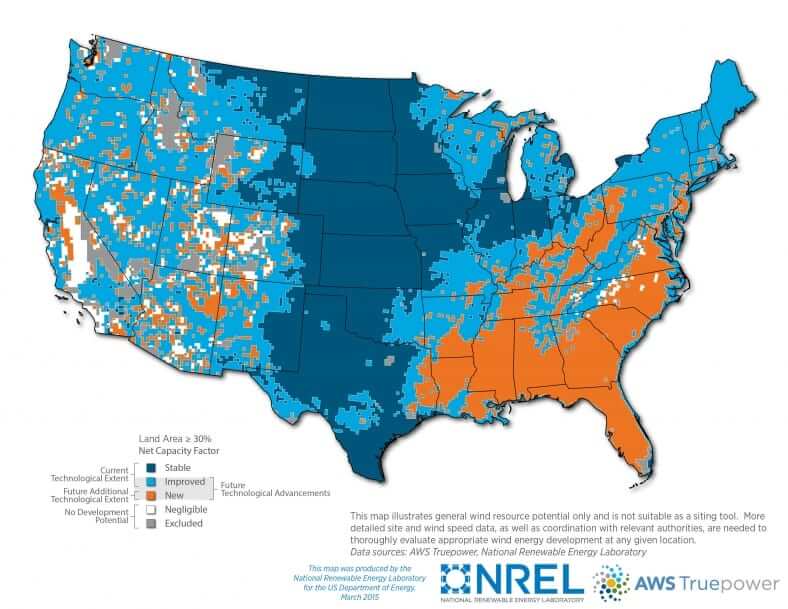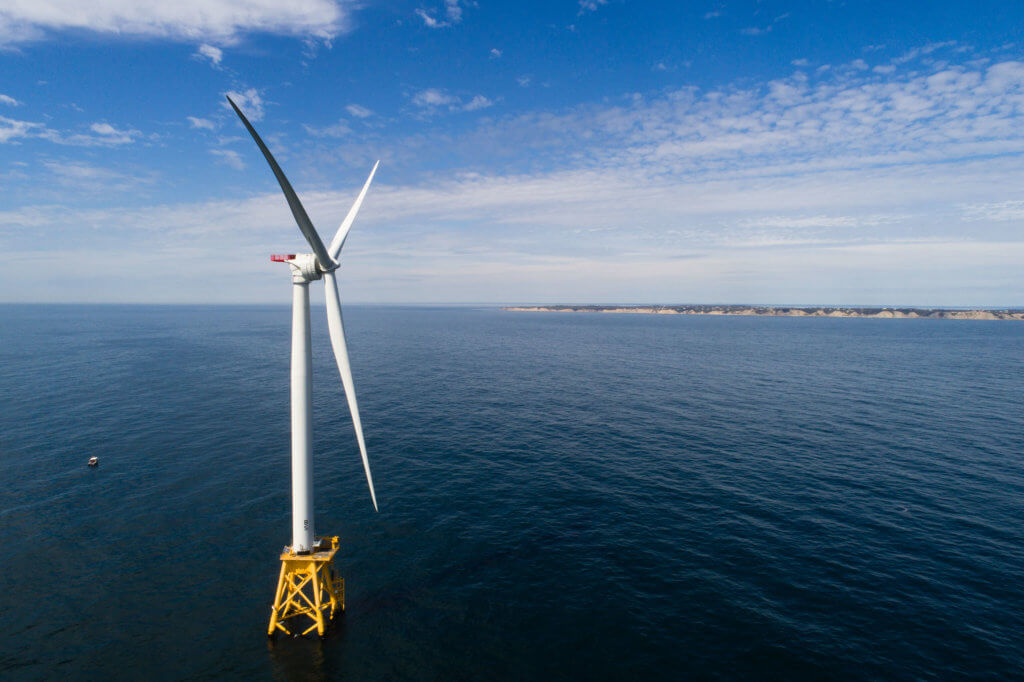MAP: Energy Dept. finds there can be wind energy in every state
The U.S. wind industry can virtually rewrite America’s wind resource map with its advancing technology so that wind energy development eventually comes to every state in the nation.
That was the news delivered directly to WINDPOWER attendees by U.S. Secretary of Energy Ernest Moniz and detailed in a report titled “Enabling Wind Power Nationwide” that featured several new wind potential maps. This follow-up report to the Department of Energy’s Wind Vision was released in conjunction with the WINDPOWER 2015 Conference & Exhibition.
“By producing the next generation of larger and more efficient wind turbines, we can create thousands of new jobs and reduce greenhouse gas emissions, as we fully unlock wind power as a critical national resource,” Moniz said in a statement upon release of the report.
In his WINDPOWER General Session address, Moniz expressed the need for investment in high-voltage transmission development, which he pointed out is achievable as it “is in no way out of bounds with current investment levels.” He pointed out DOE is also involved in aiding with industry-specific challenges—for example, the logistics of moving ever-larger wind components to project sites.
He pointed out DOE is also involved in aiding with industry-specific challenges—for example, the logistics of moving ever-larger wind components to project sites.
He stated that international climate commitments align with the numbers the wind industry can contribute as detailed in the Wind Vision, which outlines how America can double its wind energy penetration to 10 percent by 2020, double it again to 20 percent by 2030, and then reach 35 percent by 2050.
“If you do that arithmetic, you can see how this fits into the [Wind Vision] in terms of robust deployment of wind to 2020,” he said. “But, because those targets we laid out actually call for doubling the pace of carbon reductions beyond 2020, that idea of wind deployments for example, upping the ante after 2020 just fits hand in glove with those kinds of targets that we laid out.”
Moniz spoke both near- and long term, urging extension of the federal Production Tax Credit and setting sights on wind energy contributing 1 trillion kilowatt-hours a year, which he called “a nice target—a nice, round number” to pursue, even though it may take a decade or more to get there.
AWEA CEO Tom Kiernan spoke earlier in the session about the Wind Vision, likening pursuit of its benchmarks to the challenges and ultimate success of the 1990 Clean Air Act, which he worked on under the George H.W. Bush administration. Kiernan initiated what became a theme of the General Session—a clear call to action for members of the industry to let their voices be heard at a decibel level matching the size and importance of the industry. He urged the men and women working in wind energy to join AWEA (membership@awea.org), join powerofwind.com, speak publicly on behalf of the industry by becoming a Wind Ambassador, and donate to a wind-related political action committee.
“The future of our industry, I believe the future of America, is dependent upon what we do now,” said Kiernan.
Wind’s contribution to America was evident across the entire General Session. Lisa Davis of Siemens AG shared the contribution of veterans in Siemens’ wind operations all around the country, from its North American headquarters in Orlando to its facilities in Hutchinson, Kan., Ft. Madison, Iowa and elsewhere. She also highlighted wind’s arrival as a mainstream energy source that’s making a difference in so many ways.
“Ladies and gentlemen, wind power is now in the United States,” she said.
The General Session got down to business with an industry panel that built off of the news coming from Moniz and DOE as well as other speakers. Providing the DOE perspective to the otherwise all-industry panel was Jose Zayas, the Director for Wind & Water Power Technologies Office who has been at the center of the Wind Vision initiative. Echoing Moniz on a few issues, such as transmission infrastructure, Zayas reiterated the latest report’s finding, saying, “I hope one day we can sit here and talk about having wind in every state.”
Paul Gaynor, the Executive Vice President at SunEdison who helped grow a wind energy company based largely on a strategy of developing high-value projects near load, appropriately spoke to the notion of the expanding geographic potential for wind highlighted by the DOE report. “To me, it’s an opportunity to think about the country a little bit differently,” he said.
Panelists also touched on the broader wind energy market going forward and the impact of various factors such as the U.S. Environmental Protection Agency’s pending Clean Power Plan to cut carbon emissions in the electric sector. Karen Conover, Vice President at DNV GL, observed that wind is “most economic” in many of the places where carbon reductions may be most needed.
RES Americas President Susan Reilly addressed the advocacy dimension of the Clean Power Plan as the implementation details get worked out. She urged that the industry convey how “wind energy can be a very competitive compliance measure” for meeting the Clean Power Plan requirements.
Technology advancement was a major topic of the General Session, and the comments of Anne McEntee, Vice President for Renewables at GE Power & Water, epitomized the theme. “We are right now, through the industrial internet, going through a massive transformation,” said McEntee. She discussed GE’s “Digital Wind Farm,” announced today, which maximizes turbine efficiency at a project site by using the power of big data and real-time information to change hub heights and perform other measures.
Doug Greenholz, President of IKEA Property Inc., closed out the session with some firsthand information from the ever-growing number of companies buying wind. “Wind is limitless, renewable, and free, and it helps keep costs down,” he said.
And, Greenholz said, wind energy is in sync with the company’s core value of having a positive impact on people’s lives—in this case by incorporating sustainable practices.
IKEA’s plan is to produce more renewable energy than it uses in its operations by 2020, according to Greenholz.





